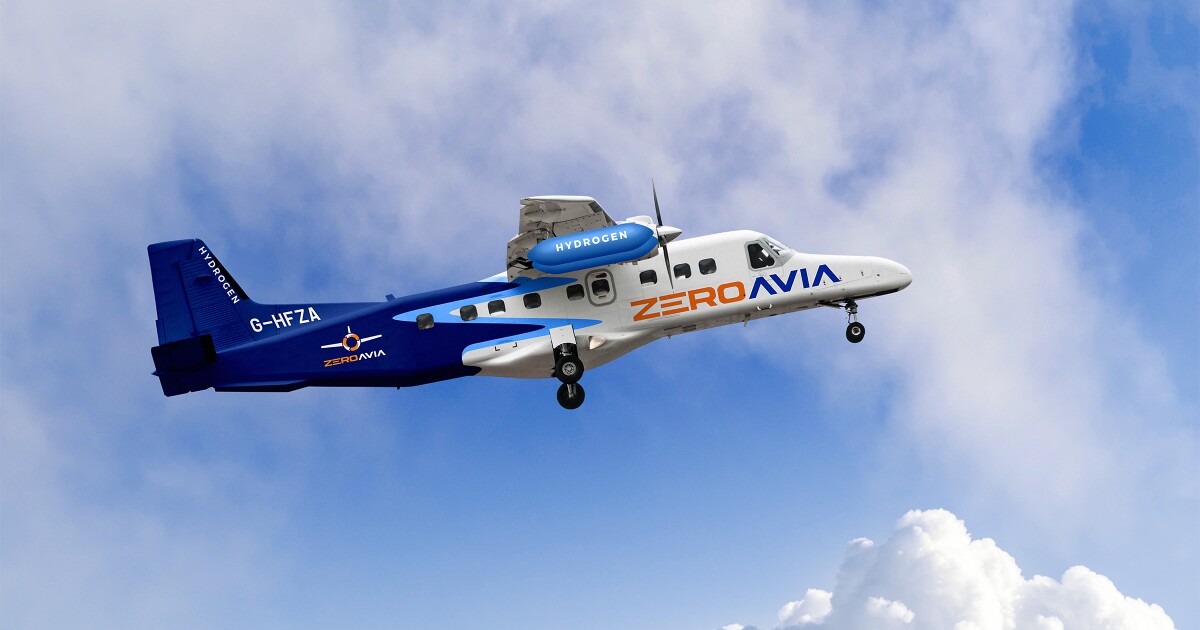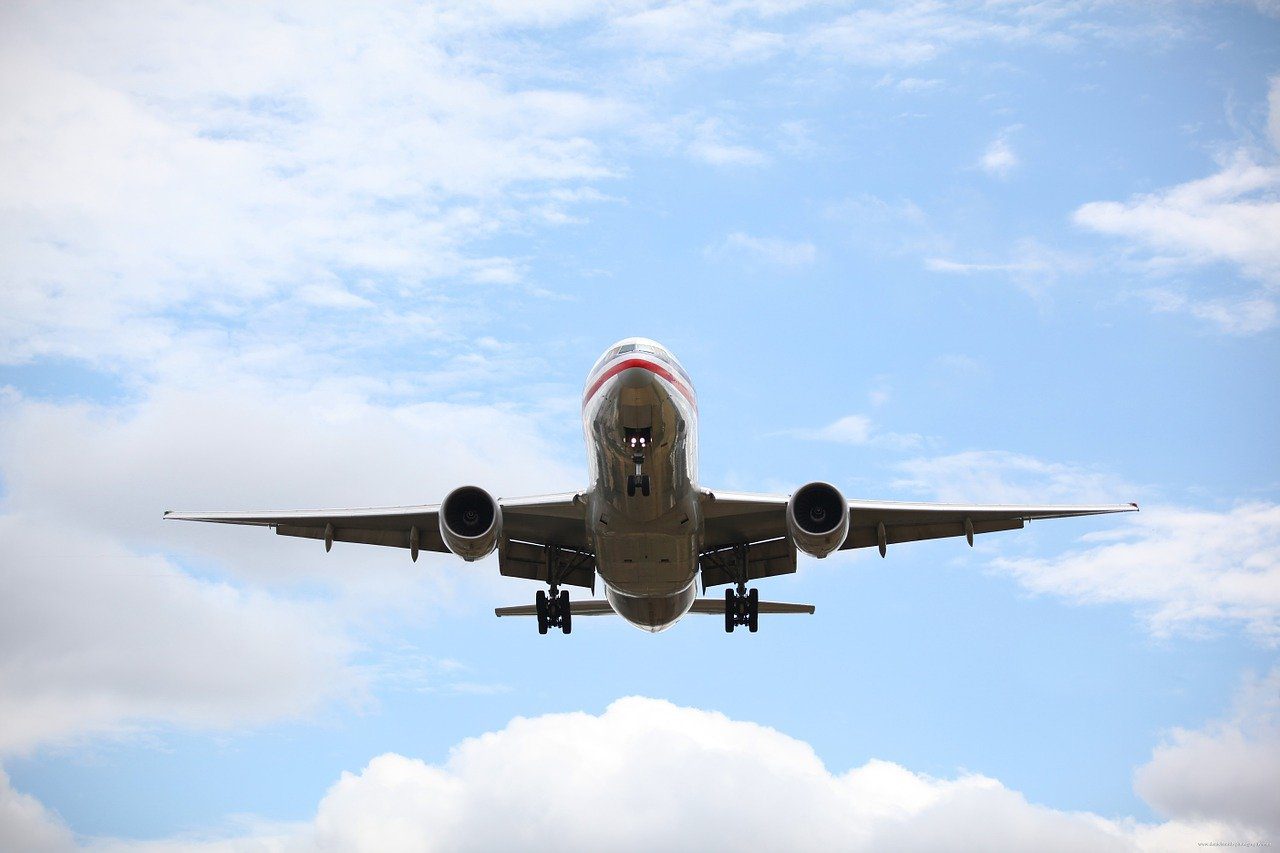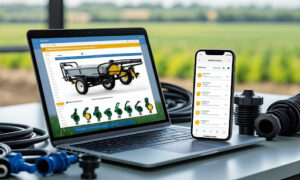ZeroAvia has new high praise to celebrate.
The World Economic Forum (WEF) awarded ZeroAvia a spot on its exclusive “2021 Technology Pioneers” list. The annual list lauds only 100 companies worldwide in the early to growth-stage that showcase “great potential to not only shake up their industries but offer real solutions to global problems,” according to a statement from WEF member Susan Nesbitt. The list also included innovators in cybersecurity, robotics, and artificial intelligence. WEF called ZeroAvia, “The first practical zero-emissions, hydrogen-fuelled, powertrain technology provider for aviation,” in a list of North American notables.
“Our goal is to supply integrated drop-in units that are functionally equivalent to today’s turboprop powertrains: fuel in at one end and rotation at the other,” explains Val Miftakhov, the CEO of ZeroAvia.
If the aviation company has its way, the cutting-edge zero-emission technology will one day replace conventional engines on commercial passenger and freight planes of all sizes.

On the flight path to net-zero
The 4-year-old startup’s mission of green aviation caught the attention of Amazon, which contributed a portion of funds out of the company’s Series A of 21.4 million into ZeroAvia under its $2 billion Climate Pledge Fund. The Climate Pledge is the e-commerce giant’s rallying cry for companies across the globe, across all sectors, to join it by reaching net-zero carbon emissions by 2040—ten years sooner than the Paris Agreement.
Aviation accounts for about 2.5% of global carbon dioxide emissions. The figure may seem paltry, but passenger air travel is still producing the highest and fastest growth in individual emissions, according to the Environmental and Energy Study Institute (EESI). Aviation also makes up a whopping 13% of the transportation industry’s carbon dioxide emissions, which itself accounts for 14% of all global greenhouse gas emissions.
ZeroAvia is trying to decarbonize one of the most common forms of air travel: short-haul flights between 300 and 500 nautical miles. The company’s goal is to transition all short-haul flights from fossil fuels, which emit harmful greenhouse gases, to green hydrogen, which only emits water vapor. What makes green hydrogen such a powerful alternative to existing fossil fuels is its sustainability and power. Green hydrogen is a product of solar- and wind-powered electrolyzers. And unlike solar and wind power, it’s powerful enough to fly commercial aircraft for hundreds of nautical miles.
“ZeroAvia’s powertrains emit no CO2 and take care of the non-CO2-related, climate-forcing emissions that result from high-altitude combustion,” says Miftakhov. “They do not produce nitrous oxide or ozone, which are greenhouse gases; sulfur dioxide to influence solar radiation; aerosol; or soot. The only emission is water.”
The startup has created the first green hydrogen-electric powertrain, which has made completely zero-emission aviation by a commercial-grade aircraft possible. This breakthrough led to ZeroAvia’s inclusion on the Fuel Cell & Hydrogen Energy Association (FCHEA) board, a leading national advocate for hydrogen technology research, development, and implementation.
Earlier this year, it reached another milestone on the path toward decarbonization when it completed a high-power ground test of a new 19-seat green hydrogen aviation powertrain — with zero emissions.

ZeroAvia’s flight testing and history in the making
ZeroAvia is also involved in the HyFlyer program, a U.K. government-backed project funding some of the company’s green-hydrogen research. In the first phase, HyFlyer I, ZeroAvia completed a test of a six-seat flight with its 250kW powertrain. This first attempt used batteries and fuel cells.
However, the second phase, HyFlyer II, saw a stronger, 600kW powertrain, enough power, the company says, to complete a 500-mile flight on a 19-seat aircraft. In July, the company said it secured two 19-seat Dornier 228 aircraft to conduct the mission, which it says will happen by year-end. In August, ZeroAvia proved the brute force of the powertrain during a test in which it hauled a 15-ton military-style truck across a tarmac.
Check out this snippet of the ZeroAvia-led Project HyFlyer. Our successes and lessons learned are being used in HyFlyer II. Big thanks to partners @EMEC_Ltd and @intellenergy. Click below to watch the full video. #hydrogen #aviation #fuelcell #zeroemission pic.twitter.com/JRxm9zQyF7
— ZeroAvia (@ZeroAvia) September 20, 2021
“We believe that increasing the size and range of hydrogen-electric aircraft just needs good engineering and smart integration at the system level,” Miftakhov said. “We already know how we want to enter the next market segment of larger, 70-seat, regional aircraft and have ideas about how to move to power 100-seat aircraft.”
While there’s still a long way to go before green hydrogen technology can decarbonize the current aviation industry, companies like ZeroAvia are working toward a greener future. The company believes that it can produce the technology for zero-emission, short-haul flights within the decade. It also has much bigger plans to create a zero-emission aircraft with 200 seats that can fly more than 5,000 nautical miles by 2040.

Building a sustainable future, the ZeroAvia way
The inclusion on the World Economic Forum’s “2021 Technology Pioneers” list is a reason for optimism. The world is paying attention to the importance of decarbonizing traditionally fossil fuel-dependent industries. Not only has Amazon become an early investor, but the company has also netted funding from Shell Ventures, the Ecosystem Integrity Fund, Summa Equity, and Horizon Ventures, and Breakthrough Energy Ventures.
ZeroAvia’s mission is to create sustainable aviation technology by accelerating the aviation sector’s transition to zero-emission flight. Its innovative, renewably-powered hydrogen-electric technology makes sustainable air travel at scale a possibility — all while removing the limitations of existing zero-emissions programs. ZeroAvia is making the first truly scalable solution to the traditional aviation sector’s sustainability problem.



































